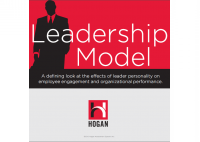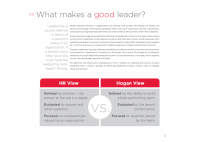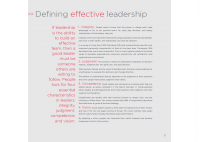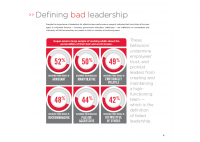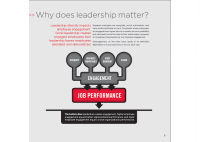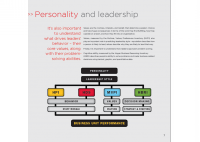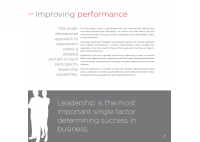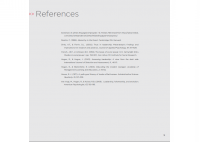Leadership Model
10 Oct 2012
A defining look at the effects of leader personality on employee engagement and organizational performance.
What makes a good leader?
Leadership is usually defined in terms of a person’s status in an organization. If a person has a title, he or she must have the leadership skills. Right? Wrong.
People typically advance in organizations by pleasing their bosses with displays of loyalty and technical knowledge. Performance appraisals reflect how much supervisors like their subordinates. Consequently, designated high performers are often skilled at office politics rather than leadership.
Human evolution suggests an alternative definition of leadership. During 2 million years of pre-history, humans lived in egalitarian hunter-gatherer societies, and there was constant warfare between them. Leadership probably evolved as a mechanism that allowed normally selfish individuals to pull together for a common purpose - to compete with neighboring groups to defend territory and resources.
Therefore, leadership should be defined as the ability to build and maintain a team that can outperform the competition. Leadership is a resource for the group, not a source of privilege for incumbents; leadership should be defined and evaluated in terms of the performance of the team, which depends on how the subordinates perceive the leader.
This definition has three useful consequences. First, it clarifies the meaning and function of good leadership. Next, it makes it possible to define bad leadership. Finally, it makes it easy to evaluate leader performance.
Defining effective leadership
If leadership is the ability to build an effective team, then a good leader must be someone others are willing to follow. People look for four essential characteristics in leaders: integrity, judgment, competence, and vision.
1. Integrity. People need to know that the person in charge won’t take advantage of his or her position—won’t lie, steal, play favorites, and betray subordinates. Unfortunately, many do. Integrity is the most important characteristic of good leaders, and once subordinates lose trust in their leaders, the relationship can never be repaired. In a survey of more than 1,000 individuals, 81% said trustworthiness was the most important personality characteristic of their all time best boss. Conversely, 50% described their worst boss as deceitful. Trust in one’s superior predicts the entire range of desirable organizational outcomes: productivity, job satisfaction, and organizational commitment.
2. Judgment. The success or failure of organizations depends on decision-making. Judgment has two parts: pre- and post-decision. Most business failures are the result of bad decisions that are compounded by an unwillingness to evaluate the decisions and change direction. The welfare of subordinates directly depends on the judgment of their superiors, and some people have better judgment than others.
3. Competence. Good leaders are perceived as knowing what they are talking about, as being competent in the team’s business. In hunter-gatherer tribes, leaders are distinguished by their moral qualities, their judgment, and their superior hunting ability. Subordinates see leaders who lack business acumen as empty suits, and are unwilling to follow them. Our survey showed that 48% of respondents described their best boss as good at business strategy.
4. Vision. Good leaders explain to their team the significance of their mission and how it fits into the larger scheme of things. This vision clarifies roles, goals, and the way forward, thereby facilitating team performance.
By adopting a vision, people can transcend their selfish interests and develop impersonal ends for their actions.
For more details, please follow the presentation from Photo Gallery.

